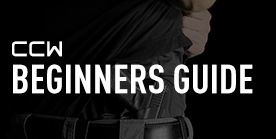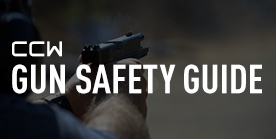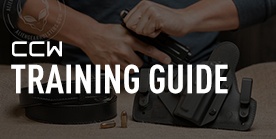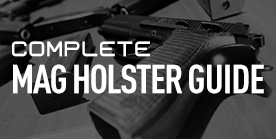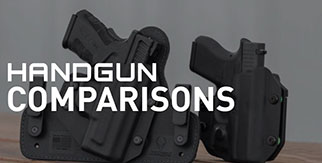Sig P226 vs P320. Sig Sauer P320 and P226 Firearm Comparison [2022]

Sig P226 vs. Sig P320. Modern Vs. Classic For Concealed Carry?
It would be a little odd for anyone to really be torn between Sig P320 vs. Sig P226. While it's not quite the difference between chalk and cheese, the two guns are fundamentally different and it doesn't seem like a person interested in one would be interested in the other.
But maybe somebody might. Who knows? Also, who says you have to choose?
Choosing between these guns is something of a false dilemma (they're very different) but there's enough people that actually wonder if one is "better" than the other. Is one? Well...
Sig P226: A Service Pistol From The Age Of Betamax

The Sig Sauer P226 was devised for the XM9 Service Pistol Trials, the goal of which was to replace (and retire) the M1911 pistol from US inventory. The US government wanted larger capacity and 9x19mm chambering to standardize on NATO calibers.
For their submission, Sig Sauer reconfigured the Sig P220 pistol for a staggered (double-stack) magazine and the 9mm cartridge. Sig Sauer came second (Beretta's bid was cheaper) but select units (famously the Navy SEAL teams did) bought P226 pistols anyway.
It's an old-school Wonder Nine, with a hammer-fired DA/SA firing system and a frame-mounted decocker. Capacity is 15+1 of 9x19mm. At one point the gun was offered in .40 S&W and .357 Sig, but .40 is dying and nobody (including Sig Sauer) cares about .357 Sig anymore.
Like other classic service pistols, it's an all-metal (aluminum alloy frame, steel slide) pistol with a cold hammer forged barrel. Some contend it isn't the best choice of Sig concealed carry guns because of it, but you can make it work.
The Sig P226 vitals are as follows:
|
Barrel length |
4.4 in |
|
Overall length |
7.7 in |
|
Height |
5.5 in |
|
Width |
1.5 in |
|
Unloaded weight |
34 oz |
|
Capacity (9mm) |
15+1 |
|
MSRP |
$900ish |
Bear in mind that Sig Sauer doesn't advertise MSRP anymore, and what you'll pay depends a lot on circumstances, like what store you're in and if there's a shortage of handguns that drives prices higher. Some models will also have slightly different dimensions, such as the Elite and Legion models, which have extended beavertails on the frame.
So...what's so special about the P226?
The trigger is not spectacular by any stretch (neither the worst nor the best for double- or single-action) and the gun is no more accurate mechanically than anything else. The positives are that the gun is a tank; P226 slides and frames are known to last through absurdly high round counts.
The other is that the DA/SA system has a decocker as the controls rather than a safety or a decocking safety; you drop the hammer to carry the gun and have a double-action first shot without worrying about a safety lever. Non-railed guns are on the used market, but Sig only makes P226 railed pistols these days.
It's an old-school workhorse gun, and that's what made it a favorite of various military units, police agencies and civilian shooters. But what about its modern counterpart?
Sig P320: The Modern Sig Service Pistol

The Sig P320 is a service pistol of today, with a polymer frame and striker-based firing system. The P320 was designed for the most recent (XM17) US government pistol trials.
The XM17 and XM18 pistols - variants of the P320 - have entered service with the US military. The P320 has also been selected by a growing number of police departments nationwide, and has been warmly received by the public and a number of top-tier competitive shooters.
Putting up measurements for the P320 is problematic because you need to be specific about which P320 you're describing. Since we're comparing apples to apples, this will be for the P320 Nitron Full Size, the most basic model.
|
Barrel Length |
4.7 in |
|
Overall Length |
8 in |
|
Height |
5.5 in |
|
Width |
1.4 in |
|
Unloaded weight |
29.5 oz |
|
Capacity (9mm) |
17+1 |
|
MSRP |
$500 to $600 ish |
Take that with a few grains of salt; Sig Sauer makes a few different variants on the frame (and some models with 5-in barrels) which can affect the dimensions. So think of this as a ballpark measurement rather than the dimensions for all models.
The P320 is the archetypical modern service pistol. A striker-fired operating system, passive trigger safety mechanisms instead of external controls, and a 15+1-or-greater capacity.
The Fire Control Unit of the P320 - an integrated trigger and sear system in a removable chassis - can be dropped into different frames. You could switch from the regular frame to an X frame, or drop your FCU into a small-radius grip frame to better fit in smaller mitts.
Granted, how much that actually matters to the user is debatable. It's an interesting feature, but it's probably not something you'll use all that often. Most people just buy the gun and that's it.
The P320 hasn't been without teething problems, but overall has established itself as a worthy choice of modern service pistol. It doesn't have any party pieces that truly set it apart from any other modern pistol of similar design; literally every feature you can get on any P320 (flat trigger, optics ready, etc) can be had on other guns.
Then again, you can also get a factory model with just about any handgun mods you can think of.
With that said, some folks wonder about which of the large Sig Sauer 9mm pistols are the best. Maybe they're a fan of the brand, maybe they wonder if the modern or the legacy system is better or what have you. So...which is better?
Well…
Sig P226 vs P320. Is One Actually Better?

Neither one is "better" than the other. It's more like "some people find one they prefer." And the market for the past 10 or more years largely prefers polymer-framed, striker-fired pistols.
Is there anything that one gun does that the other doesn't? Not really; it's not like "Glock vs 1911" or anything like that.
Both pistols have respectable capacity; 15+1 for the P226, 17+1 for the standard P320 Full Size. Both have a railed frame for mounting a light, as the P226 has been rail-only for some time now. Both guns are available in optics-ready configurations if you want to add an optic and upgraded models with improved triggers and other features.
Both are rugged, reliable pistols that have and/or are been used in military service, police service and in competition.
The P226 is only "better" if you prefer a DA/SA system, and some people do. The P320 is "better" if you don't. The P226 is also a lot more expensive. That said...that's about it.
Are there downsides to either of these pistols?
The P226 has a long trigger reach, even for a double-action pistol. That can cause issues with shooters with smaller hands. There's a cure (thin grips and a short-reach trigger kit) but the factory-standard gun might not be for everyone. The P320 is easier to tailor in this regard.
While the P226 would seem to have the most logical DA/SA system with the frame-mounted decocker, but it isn't perfect. The decocking lever is at the front of the grip, so most people have to break their firing grip or use their support-hand thumb to actuate it.
The decocker on Sig Sauer pistols also has a long throw; you have to depress it all the way to the bottom to decock the pistol. In other words, it's a great system on paper but using it in real life is not as easy or convenient as you might think. The P320 doesn't have those issues!
The bog-standard P320 doesn't have the greatest factory trigger according to many. The takeup isn't the worst, but the stock curved trigger has a rather soft wall. Some prefer it for more of a rolling break, some don't because they prefer a harder wall. Then again, you can drop in a flat trigger from Sig and improve it immediately.
The P320 is larger...by a whopping one-third of an inch, so it isn't like one will be easier to conceal than the other. The P226 is heavier, but only by 4.5 oz which is not much of a difference.
Does one gun have an advantage the other doesn't? Outside of the positive qualities of the respective firing systems...not really. Either is a perfectly good choice for a duty pistol, a carry pistol, home defense handgun or competition gun and has been used for all of the above.
If you haven't handled or shot either, find a rental range and give them a try. The one that's better for you is the one that's easiest for you to make hits with. If you're going to get one, that's the one to get.
About The Author
If I could only pic one, which would it be?
Personally, the P226 SAO Legion is the absolute finest shooting gun right out of the box. It also has the absolute best out of the box trigger I have eve shot in a production gun without modification. Combined with the Romeo 1 optics in 6moa (Sig swapped out the 3moa it came with). It is a real gem. The only real negative is that it is not legal for USPSA Carry Optics. The fact that I shoot USPSA CO class is where the P320 X5’s come into play. The X5’s are on the cutting edge of CO shooting.
So to sum it up I would say this. If the world were going to end and I had to pick one of these two guns to defend my family and myself it would be one of the P226’s. If today was just another day and life was going on as normal, I can truly say that the P320 X5 Legion is the ticket.






